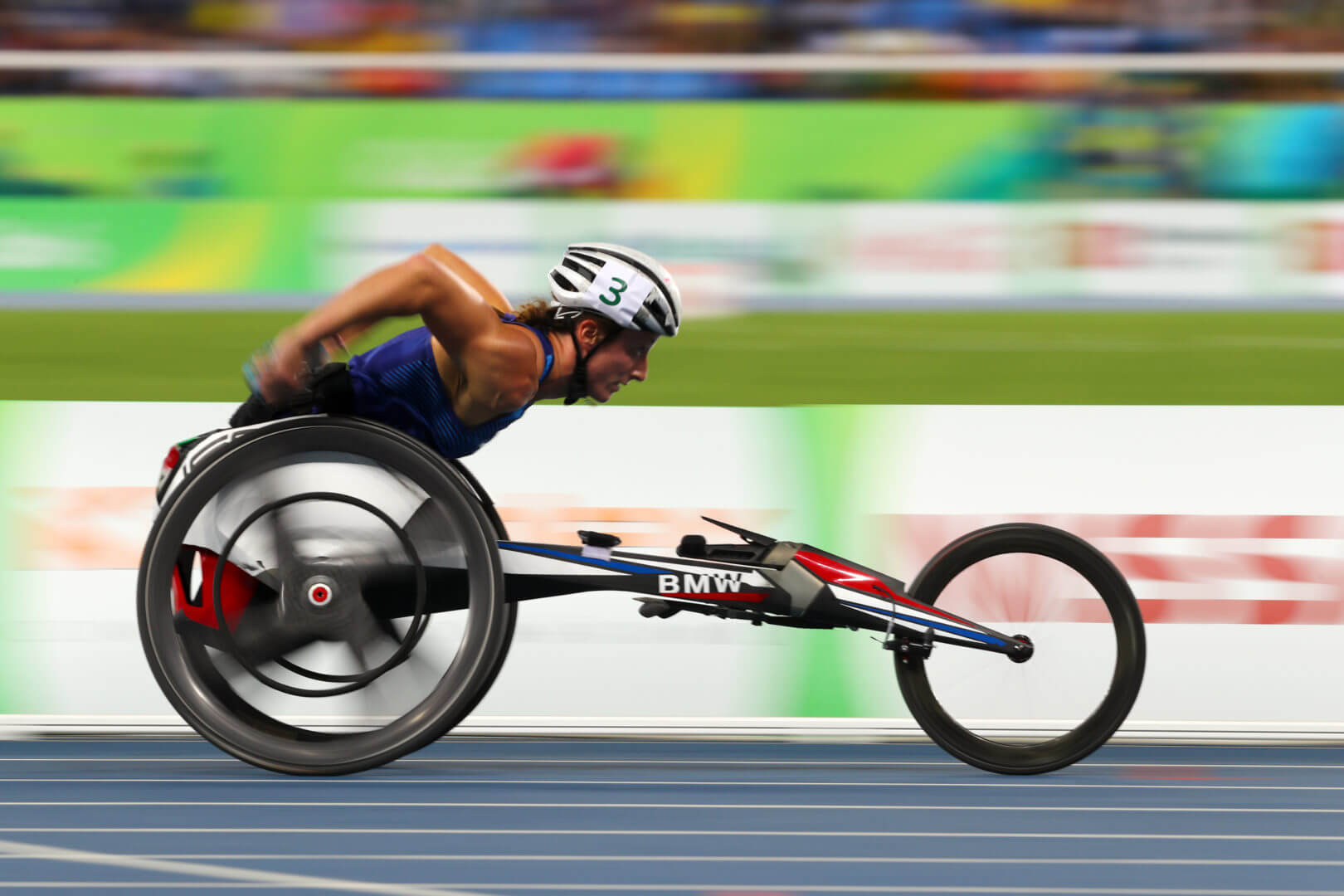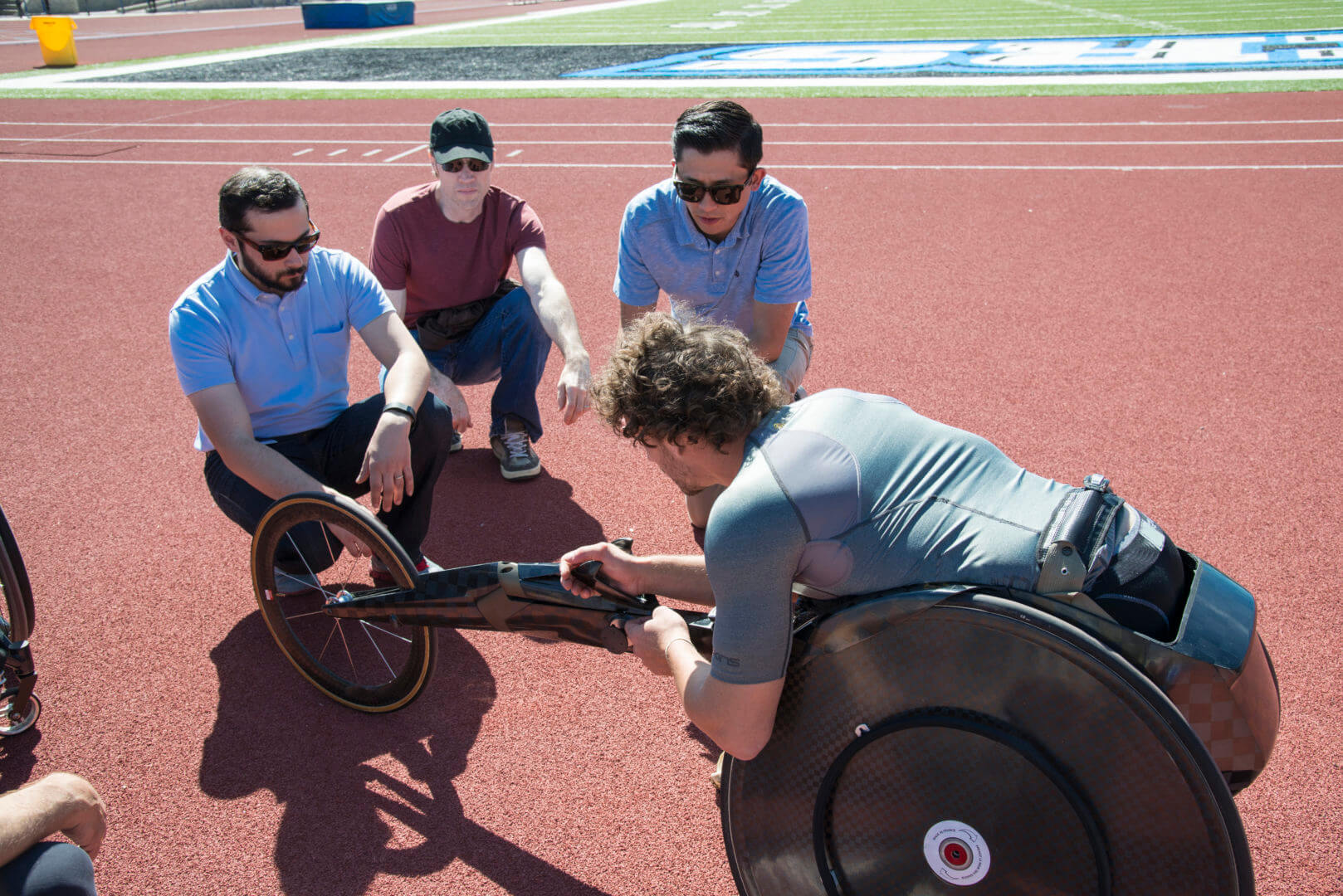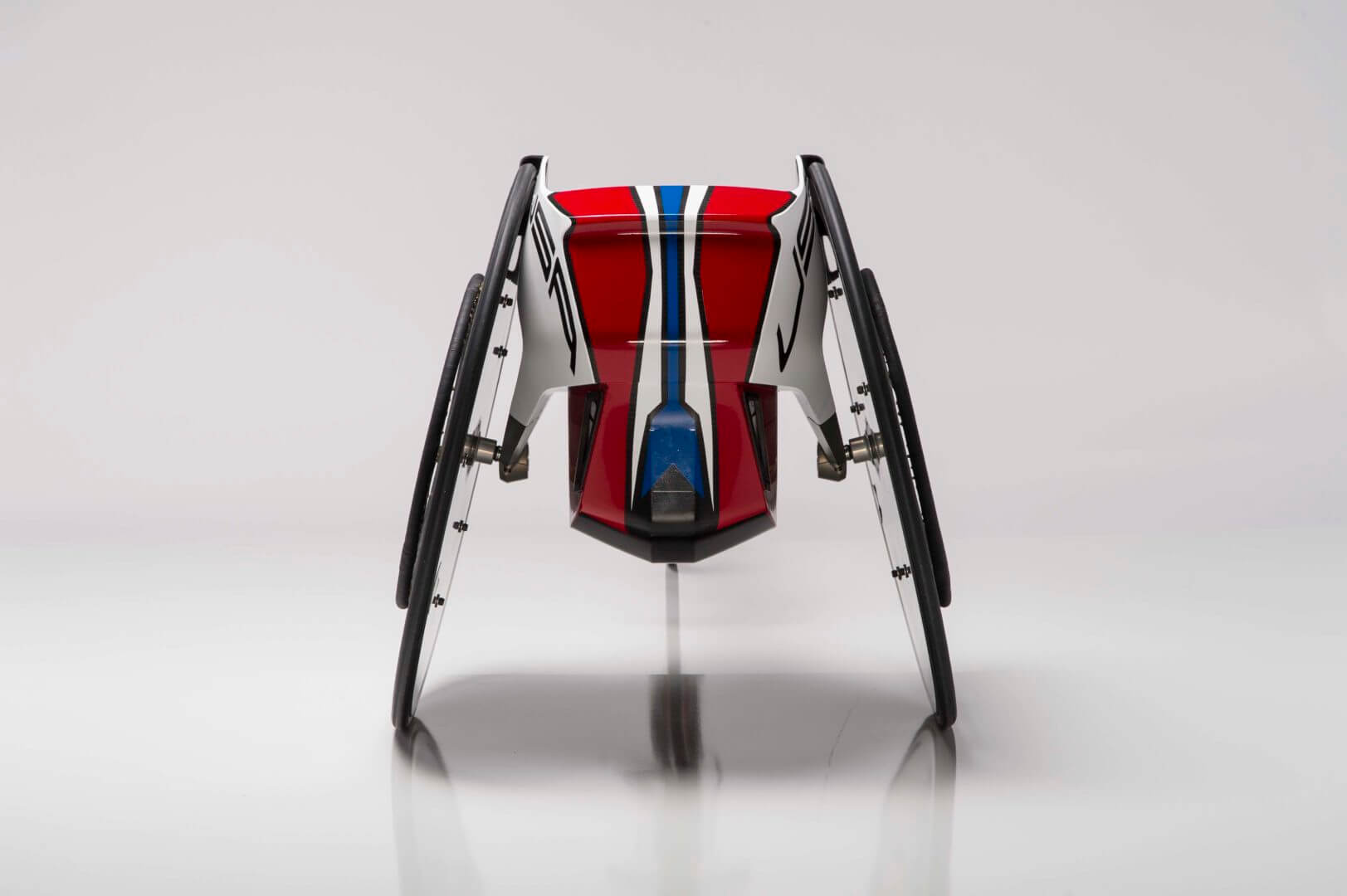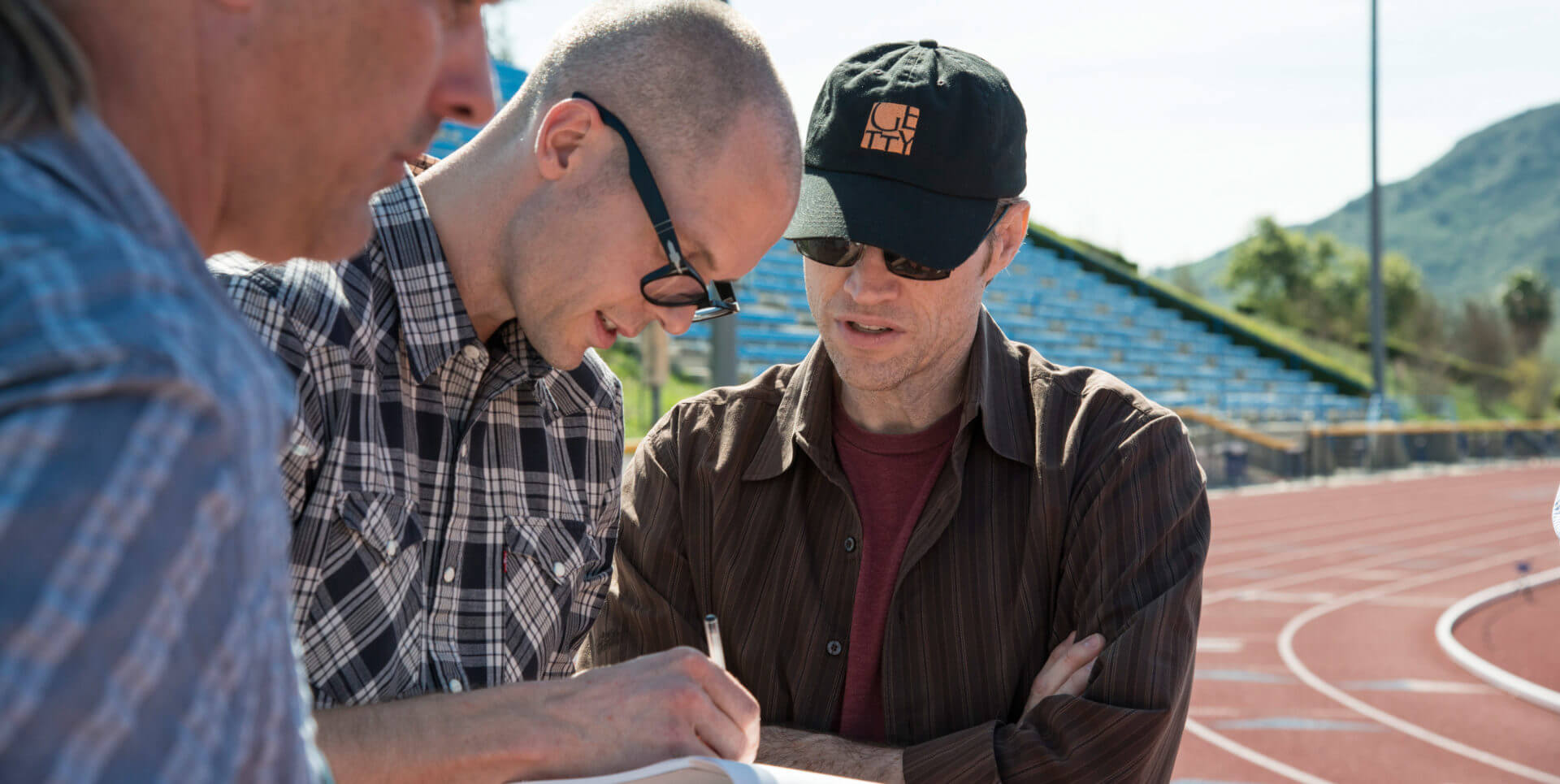Designing the World’s Fastest Wheelchair
When Tatyana McFadden rolled to the starting line at the 2016 Summer Paralympic Games in Rio de Janeiro, the world did a double take. While McFadden is a legend in her sport, it was her new BMW racing wheelchair that was getting all the attention. Few athletes in history had accomplished so much with so little — a perfect metaphor for the wheelchair’s own story.
Born in Leningrad, Soviet Union, in 1989, McFadden was born with spina bifida and paralyzed from the waist down. Abandoned in an orphanage that was too poor to afford a wheelchair for her, she walked on her hands for the first six years of her life. Eventually, she was adopted and moved to the United States, which opened up a new world for her.
Now 27, and on the world stage in Rio, “the fastest woman on three wheels” was making her fourth Paralympic appearance in a wheelchair she could hardly have imagined growing up in Leningrad. The wheelchair design and development was lead by Brad Cracchiola, B.S. ME ’93, M.S. ME ’98, associate director at BMW Group Designworks, BMW’s global creative consultancy.
“We designed it with the understanding that a wheelchair isn’t just a piece of equipment. It’s an aerodynamic extension of the athlete’s body, an intimate part of themselves,” Cracchiola said.
A few interesting features set McFadden’s racer apart. A carbon fiber frame provides greater stiffness — and therefore more efficiency — than traditional aluminum frames.
Subtle tweaks to the chassis improve aerodynamics. And everything, from the cockpit to the steering arm to the gloves she wore, was designed specifically for her body and how she sits in the wheelchair.
In this wheelchair, McFadden flew past the finish line in Rio again and again, grabbing four gold medals and shattering Paralympic records.
As the Official Mobility Partner of the United States Olympic Committee, BMW of North America approached the U.S. Paralympics Track and Field team in the winter of 2015 with the idea of developing a new racing wheelchair for Team USA for Rio. The BMW racing wheelchair is the group’s second foray into Olympic sports, following the delivery of a two-man bobsled that helped Team USA overcome a 62-year medal drought at the 2014 Olympic Winter Games in Sochi, Russia, bringing home silver and bronze.
The new racer draws on the aesthetics and engineering of the automaker’s signature vehicle design. Long, sleek and low, with three narrow wheels, it’s whittled down to only the most essential parts.
The idea is the wheelchair disappears and it is just about the athlete,” said Cracchiola, who lead the team through the entire project, from managing, prototyping and production all the way down to the graphics displayed on the racer and the storage case.
Cracchiola and his team worked closely with the athletes and coaches, observing them on and off the tracks, attending marathons and gathering all the racing science available. They created several prototypes, adding and subtracting features as they went along. One idea was to move the brakes to the rear — a typical racer has one brake in the front. While the athletes absolutely loved it, he said, the idea was nixed because the trade-off was weight and drag.
On a wheelchair, the athlete is the engine, so getting the ergonomics just right is like fine-tuning performance.
You want them to be positioned so that their power is transitioning into the wheel as efficiently as possible. Every angle matters.”
Wheelchair racers can reach speeds of more than 20 miles per hour, so the BMW team found themselves in a delicate balancing act among safety, durability, performance and ergonomics. They tested their designs on local Southern California tracks and learned the challenges and advantages of every athlete on Team USA. Because every athlete’s disability is unique to them in some way, customization was key.
“Never was that level of sophistication and intelligent resources applied to this type of data collection in wheelchair racing,” said Adam Bleakney, Team USA’s track and field coach. “I was impressed how quickly they grasped the nuances of the sport.”
The first wheelchair racers simply modified existing wheelchairs in their garages, hacking off pieces to make them lighter and faster. In the 1980s, companies began designing custom wheelchairs for competition, borrowing inspiration and equipment from the cycling world. Soon, other companies started developing wheelchair racers made from welded aluminum, most notably Honda of Japan. But profit margins were virtually nonexistent, as evidenced by the unchanged designs over the years.
“There’s a model and an idea of what a racing chair looks like and how it responds,” said Bleakney, a storied Paralympic racer himself. “Brad came at it differently and it broke through at so many levels.”
For starters, Cracchiola used computer simulations to design the most aerodynamic shape possible. Unlike traditional welded aluminum chairs, the BMW team made its out of carbon fiber, giving them the flexibility to create any shape they wanted.
The final touch was customizing each chair. Using a combination of 3-D scans and body measurements, each racer was molded to fit the athlete’s body to eliminate shaking or movement during a race.
“On the old chairs, the bucket or chair is a big rectangular thing, and they try to wedge themselves into it with foam blocks,” Cracchiola said. “Racers have to refigure it out every time. With our design, they slide in perfectly, locking themselves into the same position for every race. Their bodies can’t shift. Psychologically, they told us, they could feel that security. They knew they were ‘in.’”
Cracchiola also custom-printed steering arms based on athletes’ ergonomics and preference on how they like to steer.
“All to get the ergonomics so tightly nailed down that when they’re in it and pushing everything is working perfectly, and they’re not compensating their body to their chair,” Cracchiola said.
Even the gloves underwent innovation. Racers typically create their own custom gloves from hobby putty, so Cracchiola borrowed their favorites and 3-D scanned them so they could print out new, more durable and lightweight pairs on demand.
Everything was done to bring simple, elegant solutions to their lives,” Cracchiola said. “People don’t know how hard these athletes train.
In all, BMW built six custom wheelchairs for the top racers of Team USA. Cracchiola had the honor of traveling with the team to Rio, sharing their living quarters in the Paralympic Village and witnessing their incredible journeys.
One of the things that made an impression on him: The Paralympic Games regularly showcases some of the greatest athletes on the planet and is arguably more competitive than the Olympics but doesn’t get the same coverage.
To give you an idea of the level of performance, at the Paralympic Games four blind athletes ran the 1,500 meters faster than the gold medal winner at the Olympic Games. That means that one athlete didn’t even get a bronze medal in the Paralympics despite running a faster time than the gold medal winner at the Olympics.
“All credit to these athletes,” Cracchiola said. “This is about celebrating them, supporting them and promoting their sport. They live it day after day, year after year. We wanted to make improvements that don’t just last a race but for the rest of their lives.”
Cracchiola has a lot more to be proud of. Athletes in his wheelchair racers won seven medals, including four gold, and set four Paralympic records.
“I hope we created something that will change the sport and push the boundaries of what’s possible,” he said.








